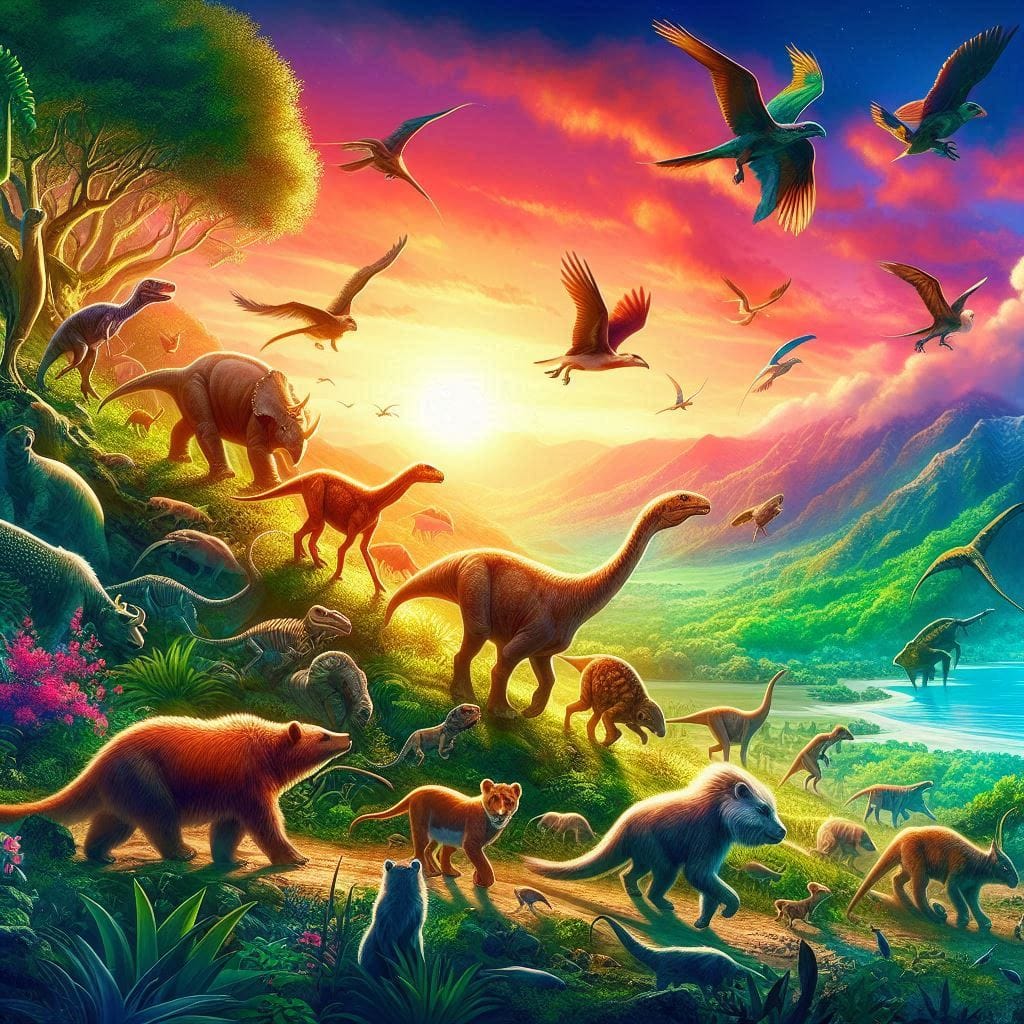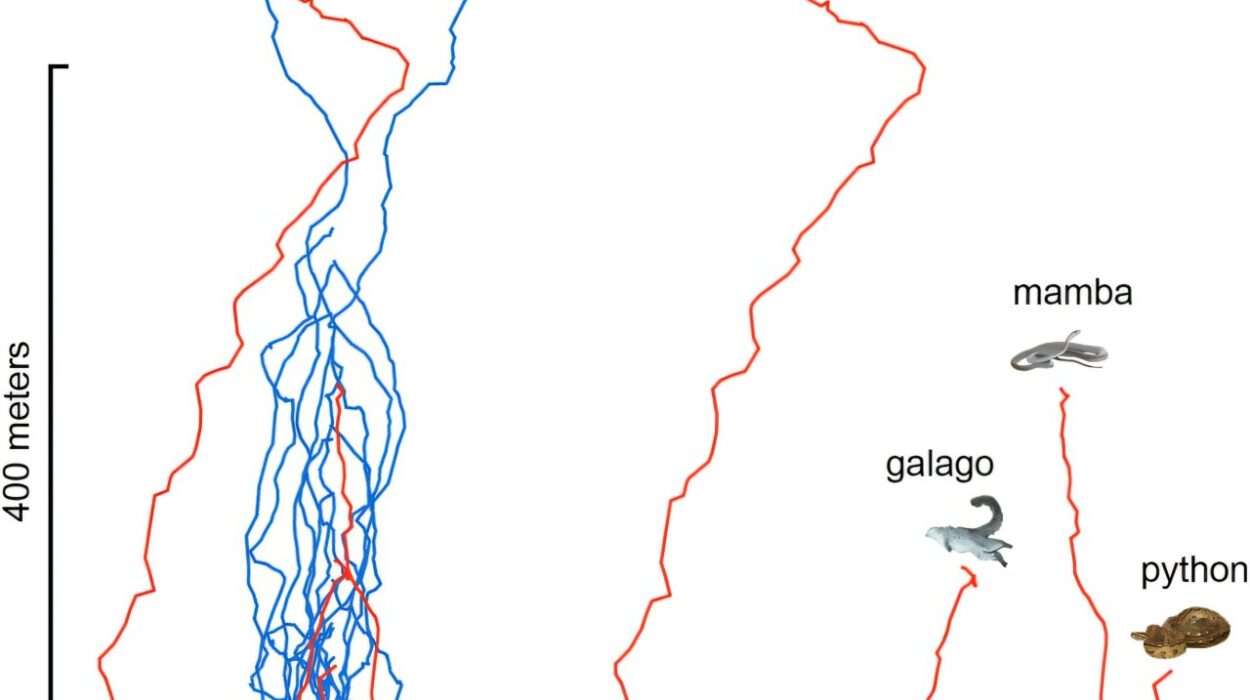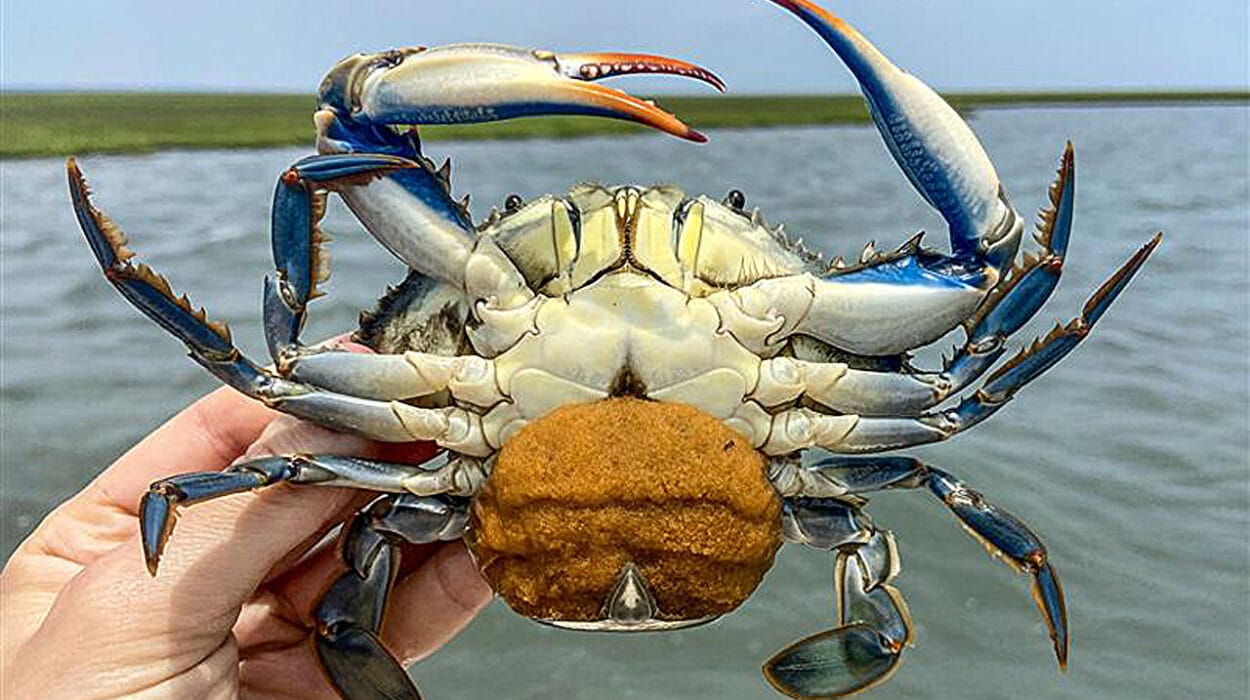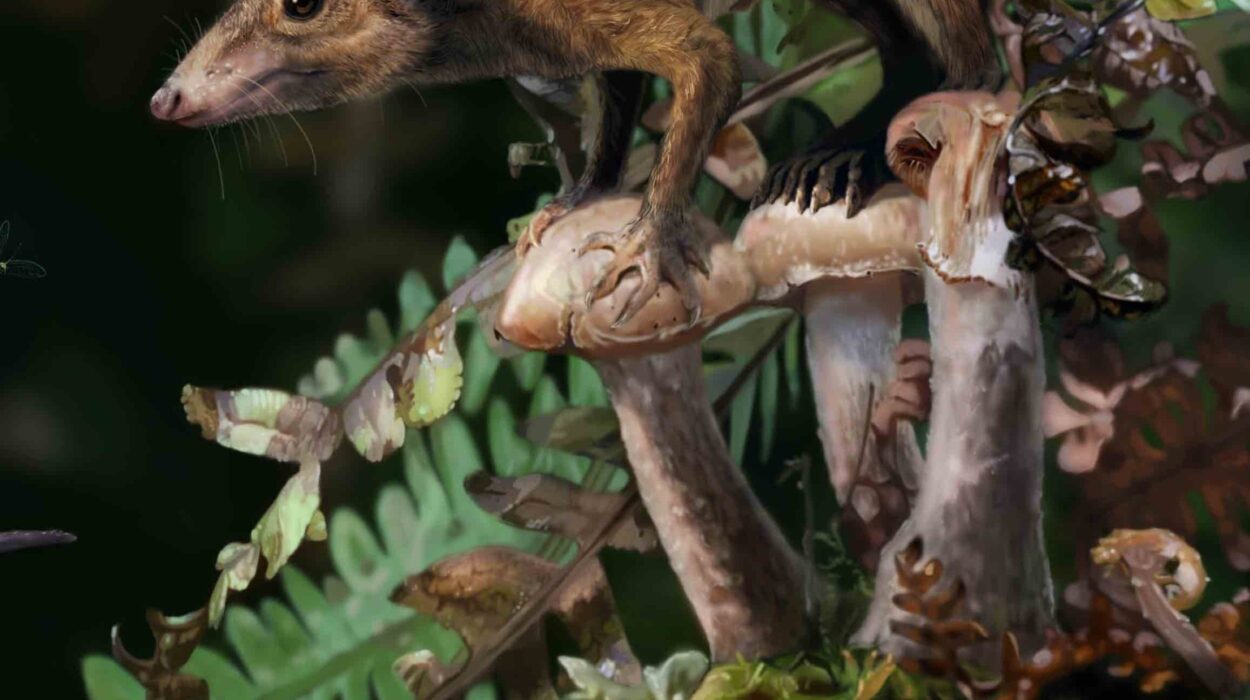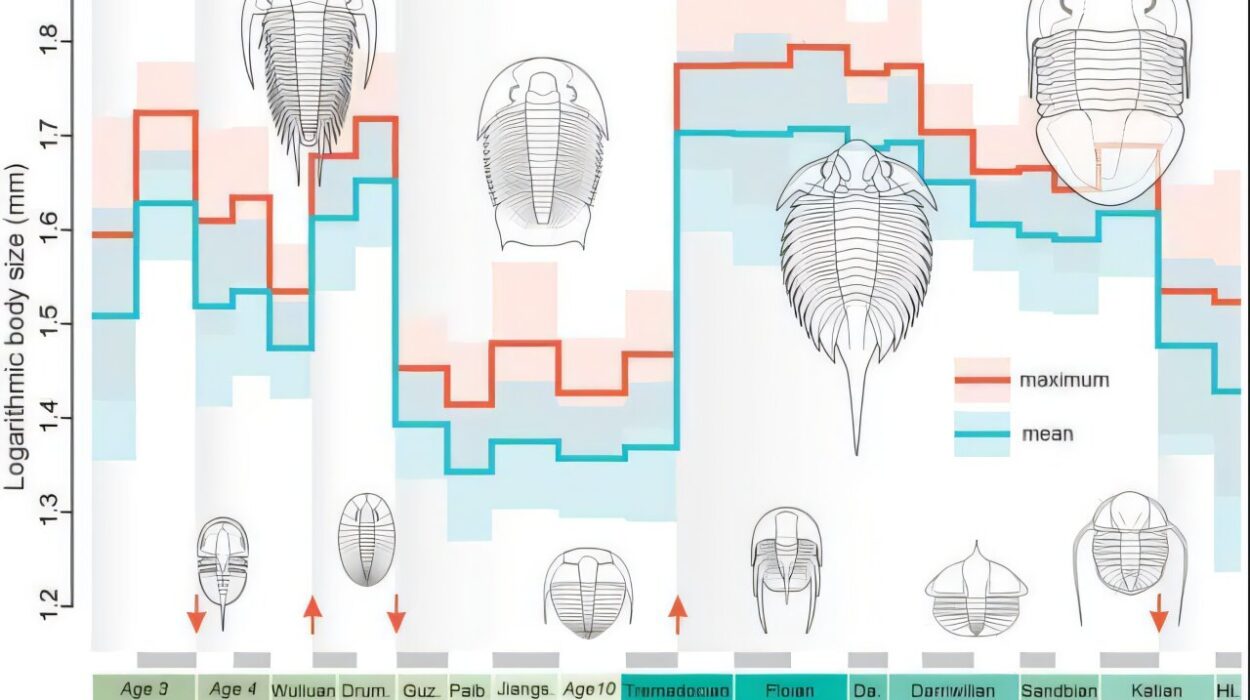Long before humans ever drew on cave walls or dreamed of gods, long before the Earth even teemed with life, the stage was already being set for a story that would unfold across billions of years. It’s the story of life itself—how it begins, adapts, changes, survives, and sometimes vanishes. Biological evolution is that story. It is not a theory in the casual sense of the word, like a guess or a hunch. It is one of the most profound and evidence-rich scientific explanations we have for how life transforms over time.
Yet for many people, evolution can feel abstract, almost mythic—dinosaurs morphing into birds, fish crawling onto land, apes standing upright and eventually contemplating the stars. But evolution is not distant history. It is here. It is now. It is written into every cell of our bodies, sculpting our immune systems, shaping our behaviors, influencing the very way we perceive the world.
To understand biological evolution is to understand how life has come to be in all its beautiful, bewildering diversity. It is to peer into the very heart of what it means to be alive.
The Foundation: Variation, Inheritance, and Time
At its core, biological evolution is about change—change in the inherited characteristics of biological populations over generations. But not all change is evolution. To be evolutionary, the change must be heritable—it must be passed down through DNA from parent to offspring.
Every individual organism carries a unique combination of genes, which are segments of DNA coding for proteins and traits. When organisms reproduce, they pass copies of their genes to the next generation. But thanks to the quirks of genetics—mutation, recombination, and sometimes just sheer randomness—these copies are not always perfect.
Mutations, the raw fuel of evolution, are changes in DNA sequences. Most mutations do little. Some are harmful. But a few offer advantages—greater resistance to disease, a stronger beak, a better ability to digest food. When these mutations improve an organism’s chances of survival and reproduction, they are more likely to be passed on.
Over many generations, these tiny advantages accumulate. Slowly, subtly, they shift the makeup of populations. The more time passes, the more change occurs. Evolution doesn’t strive toward perfection—it simply responds to pressures, opportunities, and constraints. Life is not a ladder. It’s a tree, ever-branching.
The Engine of Evolution: Natural Selection
In the mid-19th century, Charles Darwin and Alfred Russel Wallace independently arrived at one of the most powerful ideas in science: natural selection. Darwin famously wrote that life is a struggle for existence, where many more individuals are born than can survive. Those with favorable traits—the swifter gazelle, the camouflaged moth, the bacteria resistant to antibiotics—tend to survive and leave more offspring. Over time, this differential survival and reproduction cause certain traits to become more common.
This process is deceptively simple but immensely powerful. It can explain why cheetahs run fast, why birds have wings, why whales have lungs instead of gills, and why polar bears are white.
Natural selection isn’t guided. It doesn’t “want” anything. It simply filters. It is the sieve through which life must pass, retaining what works in a given environment and discarding what doesn’t.
But natural selection is not the only force at play.
The Other Architects of Change
Alongside natural selection, several other mechanisms shape the course of evolution. Genetic drift, for example, is a kind of evolutionary randomness. In small populations, chance events can cause certain genes to disappear entirely, regardless of their benefit or harm. It’s like flipping a coin only a few times and getting an unexpected result—just by luck.
Then there’s gene flow—the movement of genes between populations, often through migration. When individuals move from one group to another, they bring their genetic material with them, introducing new traits and altering the evolutionary path of both groups.
Mutation, as mentioned, is the ultimate source of all new genetic variation. Without mutation, evolution would grind to a halt. Every new trait—from a darker wing color to a better memory—has its roots in a change in DNA.
And finally, there is sexual selection—a form of natural selection where traits evolve not because they help an organism survive, but because they help it attract mates. Think of the peacock’s extravagant tail, which actually hinders flight but impresses potential partners. Or the elaborate songs of songbirds. Sometimes beauty, not utility, is the driver of change.
The Timeline of Life’s Great Transitions
Earth formed about 4.5 billion years ago, and for hundreds of millions of years, it was a hostile, molten place. But life, resilient and resourceful, emerged astonishingly early—by around 3.5 billion years ago. These earliest life forms were single-celled, like bacteria and archaea. They had no nuclei, no organelles—just simple membranes enclosing strands of DNA.
For billions of years, these microbes ruled the Earth. They transformed the atmosphere, invented photosynthesis, and began releasing oxygen as a byproduct. Around 2 billion years ago, some of them evolved internal complexity, giving rise to the first eukaryotes—cells with nuclei. This was one of the most important evolutionary steps in history.
Multicellularity followed. Cells began to cooperate, specialize, and form colonies. Over time, these colonies became true multicellular organisms—plants, fungi, and animals. With multicellularity came size, structure, and eventually, movement.
About 541 million years ago, during a period known as the Cambrian Explosion, evolution went into overdrive. Most major animal groups appeared in a relatively short span, including ancestors of insects, mollusks, and vertebrates. Evolution doesn’t always move slowly—it can leap when ecological conditions change or genetic innovations emerge.
Life spilled into every niche—swamps, deserts, oceans, skies. Fish developed backbones. Some fish crawled onto land and became amphibians. Some of those developed waterproof skin and laid eggs on land—reptiles. Birds and mammals diverged from reptilian ancestors. Dinosaurs ruled for over 160 million years before a massive asteroid impact wiped them out, clearing the way for mammals to rise.
And from one branch of tree-dwelling primates came us—humans.
Evolution Isn’t Just the Past. It’s the Present.
Despite what textbooks might suggest, evolution isn’t confined to ancient fossils or museum specimens. It’s happening right now, all around us. We see it in viruses that mutate to escape vaccines. We see it in bacteria that become resistant to antibiotics. We see it in insects that develop resistance to pesticides and in crops selectively bred to survive droughts.
One of the most dramatic recent examples is the COVID-19 virus. As it spread across the globe, it mutated, spawning new variants with different properties. This is evolution in real time—mutation, selection, and adaptation on a global scale.
Humans themselves are evolving, too. Studies have shown that certain genetic traits—like lactose tolerance in adults, resistance to diseases like malaria, or adaptations to high altitude—have emerged within the last 10,000 years. Evolution doesn’t stop because we invented cities or medicine. It continues, quietly, within our DNA.
Common Ancestry: We Are All Related
One of the most beautiful and humbling concepts in evolutionary biology is the idea of common descent. All life on Earth shares a common ancestor. You, the grass under your feet, the dog wagging its tail, the bacteria in your gut—all of it comes from a single root.
This is not poetic metaphor. It is a conclusion supported by mountains of evidence—from fossil records to DNA comparisons. The genetic code is nearly universal, with the same four nucleotide bases—A, T, C, G—spelling out life’s instructions across almost every species.
Humans share about 98.8% of our DNA with chimpanzees, our closest living relatives. We share about 85% with mice, 60% with fruit flies, and even 25% with bananas. Evolution binds us not just to our immediate ancestors, but to every living thing.
This interconnectedness forms the tree of life. And like any tree, its branches grow, split, and sometimes wither. But they all trace back to a common trunk.
Fossils: The Stones That Speak
Fossils are more than old bones—they are time capsules, records of transformation etched into stone. They tell us what lived, when, and where. They reveal transitions—fish with limb-like fins, reptiles with feathers, whales with tiny leg bones buried inside their bodies.
Transitional fossils like Archaeopteryx (between dinosaurs and birds), Tiktaalik (between fish and amphibians), or Australopithecus afarensis (an early human ancestor) don’t just connect the dots—they redraw the map of life’s journey.
But fossils are rare. Most organisms decompose without a trace. Yet the fossil record, incomplete though it is, remains one of the most powerful confirmations of evolution. Combined with genetics, it allows us to reconstruct life’s deep past with astonishing clarity.
Misconceptions and Myths
Despite overwhelming evidence, evolution remains misunderstood by many. Some believe it means humans came from monkeys, but in reality, humans and monkeys share a common ancestor. Others think evolution is “just a theory,” confusing the scientific use of “theory” (a comprehensive explanation supported by evidence) with casual usage.
Another myth is that evolution always moves toward greater complexity or improvement. But evolution is not progressive. Bacteria, though simple, are among the most successful life forms on Earth. Evolution favors what works, not what’s “higher” or “better.”
Some think evolution has a goal or direction. But it doesn’t. There is no master plan, no final destination. Evolution is shaped by environments, which themselves change. What is advantageous today may be harmful tomorrow.
Why Evolution Matters
Understanding evolution isn’t just about satisfying curiosity. It has practical implications for medicine, agriculture, conservation, and climate science.
In medicine, evolutionary principles help us track disease outbreaks, design effective treatments, and understand antibiotic resistance. In agriculture, evolution guides the development of pest-resistant crops and disease-resistant livestock. In conservation, it helps us preserve genetic diversity and understand how species adapt—or fail to adapt—to changing environments.
On a philosophical level, evolution forces us to reckon with our place in nature. It humbles us. It connects us. It strips away illusions of separateness. In a very real sense, we are the universe becoming aware of itself.
The Future of Evolution
As Earth faces unprecedented changes—climate disruption, mass extinctions, genetic engineering—evolution continues to respond. Life will adapt, or it will perish. Species will emerge, shift, vanish.
And we now hold a strange new power: the ability to direct evolution, not just observe it. Through CRISPR and genetic modification, we can edit DNA with increasing precision. With synthetic biology, we can design organisms from scratch. These technologies promise to cure disease, end hunger, and perhaps even extend life. But they also raise profound ethical questions.
What does it mean to “improve” a species? Who decides? How do we ensure that our reach does not exceed our wisdom?
A Legacy Written in DNA
Biological evolution is not merely a scientific theory. It is the epic saga of life written in molecules and bones, in patterns and probabilities. It is the poetry of adaptation and survival, of extinction and emergence.
To study evolution is to listen to the Earth’s longest and most intricate story. It is a story still being told—in coral reefs and rainforest canopies, in urban alleys and distant tundras, in the whispered inheritance passed down in each generation of every living thing.
We are part of this story. Not separate from nature, but born from it, shaped by it, and still subject to its rules. To understand evolution is not to diminish ourselves, but to see with clearer eyes: that life is precious, fleeting, and astonishing—and that in a world where everything changes, understanding how we change may be the most important knowledge of all.
